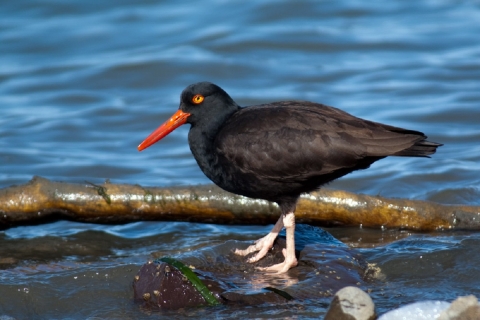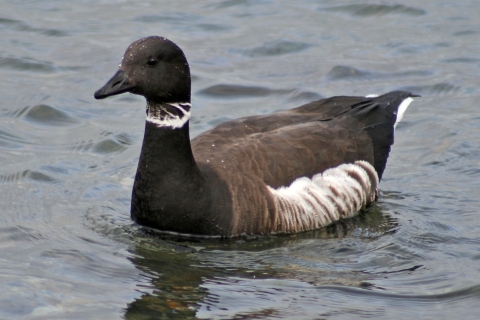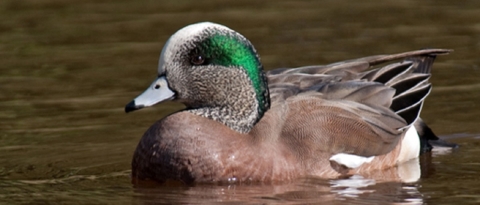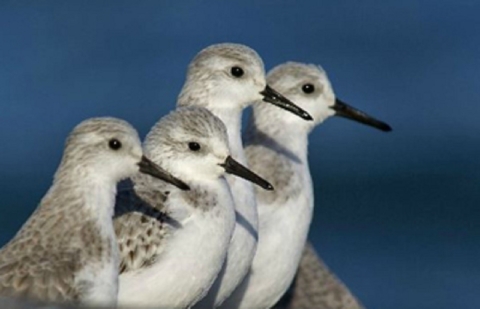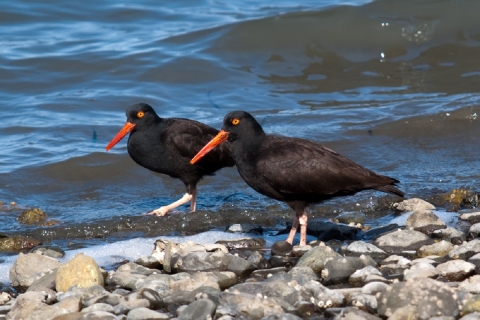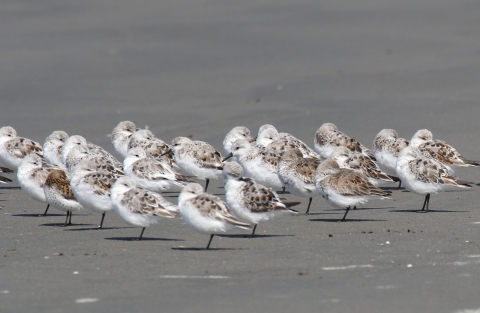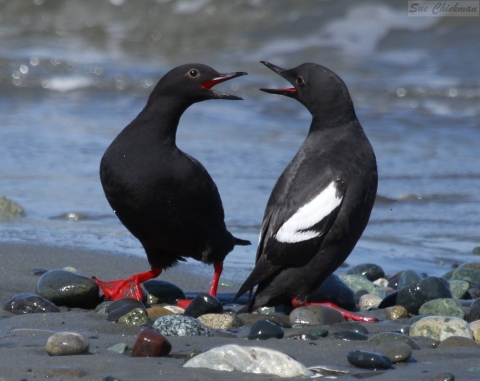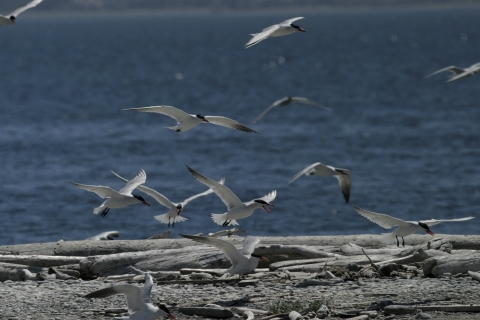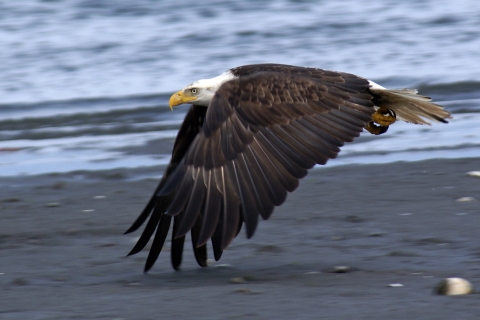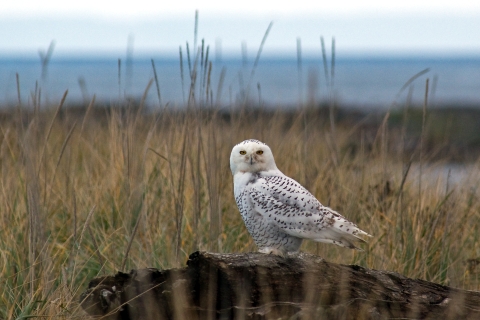With its rich and diverse habitats, Dungeness supports more than 240 species of birds. Here just are a few.
Waterfowl
Dungeness is best known for its population of brant, but it also supports a wide range of other ducks and geese.
Brant
Brant are a small sea goose characterized by a black head and neck with a white "necklace." Their primary food preference is eelgrass. The eelgrass beds in Dungeness Bay and Harbor provide an important migrant staging and winter habitat for 1,000 to 3,000 brant per year.
American Wigeon
American wigeons are easily identified by a white crown coupled with a patch of brilliant green that extends from the eye. Large numbers can be found in winter feeding alongside brant in the Refuge's eelgrass bed. Occasionally, a lone Eurasian wigeon may be spotted among the abundant flocks of wigeon.
Harlequin Duck
With its distinctive slate blue body, chestnut flanks, and white markings on the head and chest, the colorful harlequin duck stands out from the crowd. It spends its winters roosting on the shoreline of the Spit and diving for crabs and mollusks in the frigid waters of the Strait
Shorebirds
Shorebirds such as dunlins and sanderlings can be found roosting and foraging for food in the Refuge's nearshore habitats.
Black Oystercatcher
With its long orange beak, orange eye, and pink legs the black oystercatcher is a conspicuous resident of the Refuge. Beach hikers may hear this bird insistently "scolding" them as they walk. Oystercatchers nest on the rocky shores of Dungeness and feed in the Refuge's mudflats.
Sanderling
The sanderling is a small, grey and white shorebird with a thick, black beak. It can be found racing back and forth with the surf, searching for food in the sand.
Dunlin
During breeding season, the dunlin is distinguished by its black-bellied, rufous-backed plumage, while for the rest of the year it blends in with a gray/brown plumage. On Refuge, dunlin are most active in the mudflats and lagoons during the winter months where they forage for food anticipating the long flight to their breeding grounds in the Arctic.
Least Sandpiper
A small, brown sandpiper with yellowish legs, the least sandpiper is one of many shorebirds that migrate through the Refuge in spring and fall. The Refuge's mudflats and coastal lagoons are an important source of food as they journey between their wintering grounds in Central America and their summer breeding grounds in the subarctic.
Seabirds
A variety of seabirds from scoters to cormorants can be spotted swimming off the shores of the Spit.
Seabirds of the Pacific Northwest
Pigeon Guillemot
This black bird with a white patch on the wing and bright orange feet can be seen in the spring flying from burrows in the bluffs west of Dungeness Spit.
Caspian Tern
A black cap and a stout orange bill differentiate Caspian terns. They have historically nested on the Refuge, but because they are easily disturbed, nest failure has been a common occurrence.
Birds of Prey
Bald eagles and snowy owls perch stoically in the driftwood, scanning for prey.
Bald Eagle
A large, yellow hooked beak, white head and tail, and a dark body characterize the bald eagle. At Dungeness they can frequently be seen perched in driftwood scanning the shore for prey.
Snowy Owl
Sightings of this elegant white owl always cause a stir. Periodically an irruption may bring several snowy owls to the region to over-winter, while other years may bring none. Historically these irruptions were thought to be predator/prey related, but current research indicates other factors, including weather, may contribute to their migration.

